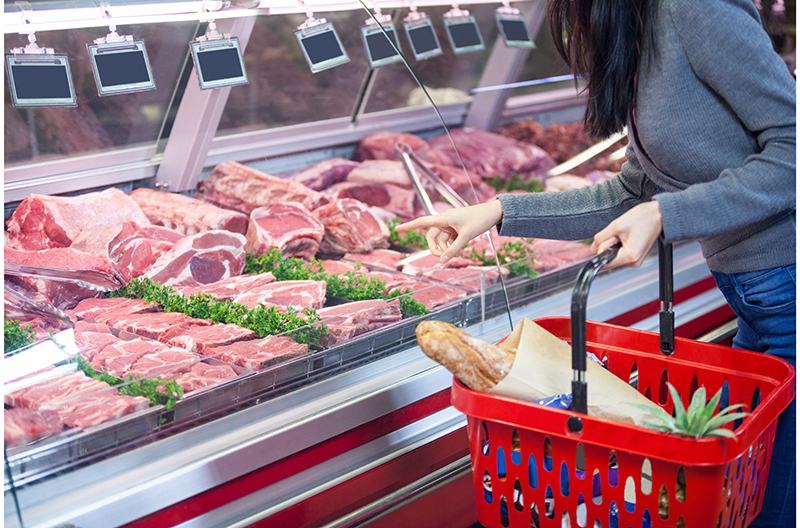The average price per pound in the meat department across all cuts and kinds, both fixed and random weight, stood at $4.54 in February, according to the monthly update from IRI, 210 Analytics and Hillphoenix.
Prices increased slightly year-on-year at 2.8 percent, continuing a trend of moderating levels of inflation that started in 2022.
As such, meat and poultry inflation was far below the February average for total food and beverages. Yet, meat and poultry were among the top five examples cited by consumers when naming products that costs more now than they did last year. As perception is reality, it will be important to continue to underscore value and versatility.
By protein, February prices decreased for beef, pork and lamb when compared to February. Chicken inflation remained in the single digits, while prices for fresh turkey were 12.9 percent higher than in February last year. In the 52-week view, most of the processed meat category averaged double-digit price increases, led by packaged lunchmeat, that was up 18.7 percent versus last year.
February meat sales improved over their January performance, in particular for fresh meat, that has experienced less inflation than processed meat. Pound sales for fresh meat were down 2.1 percent year-over-year in February, which combined with mild inflation led to a small dollar increase of 0.3 percent.
Processed meat volume sales dropped 5.3 percent from their February 2022 levels, which combined with inflation resulted in a year-on-year decrease of 1.5 percent in dollar sales. In the 52-week view, dollar sales remain ahead of year ago levels, but pounds are trending behind. Compared to the pre-pandemic normal, pound sales are still ahead.
After dipping 4 percent below year ago levels in January, pound sales in February fared better both when compared to February 2022 and February 2020 when sales yet again jumped above pre-pandemic levels. Dollar sales, that had dropped nearly 2 percent behind year ago levels in January also recovered to come in roughly on par with February 2022 levels.
Assortment, measured in the number of weekly items per store, is averaging 491 meat and poultry SKUs. For the first time in years, assortment matches that of the prior year, even if items are down 4.8 percent versus February 2020.
In all, the combination of mild inflation with subdued volume pressure prompted a 0.3 percent increase in fresh meat sales in February versus February 2022. Beef was the biggest seller, but chicken had the strongest year-on-year performance. In the 52-week view, dollars trended 3.5 percent ahead, whereas pounds fell 1.7 percent behind the year ago levels.
In February, both dollar and pound sales were down when compared to 2022 for total processed meat. Packaged lunchmeat, dinner sausage, Frankfurters and processed chicken grew dollars, but all lost ground in pounds. In the 52-week view, dollar sales did remain ahead of year ago levels, but pound sales trailed by 3.8 percent. Frankfurters came closest to matching last year’s pound sales, at 0.1 percent.
The first quarter of 2023 looks to be little different from 2022. Consumers remain worried about inflation and money-saving measures continue to pressure units and volume. While unit sales remain ahead of 2019 for most departments, the year-on-year unit pressure is high. Ingredient inputs, weather and transportation conditions remain areas of concern as prices are lapping the double-digit increases of 2022.

